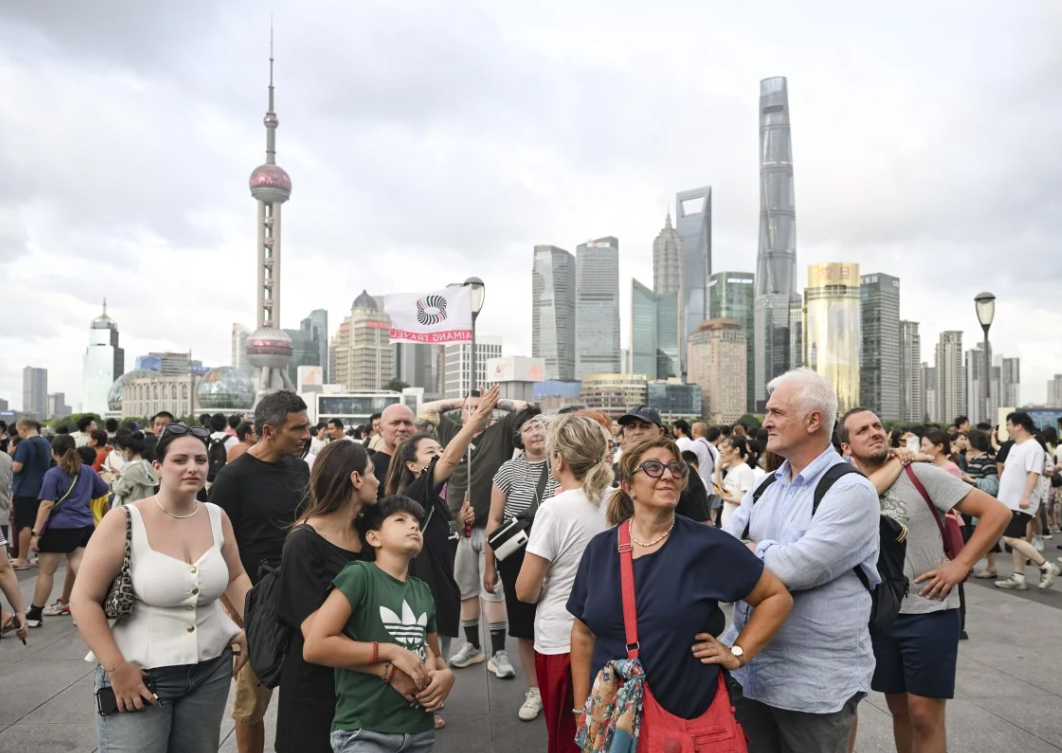China is actively working to attract international tourists. One of its most effective tools is its visa exemption policy, which has been expanded to include more countries.
The National Immigration Administration (NIA) reported on 18/9 that nearly 25 million international visitors entered China between January and August. Almost 16 million of these arrivals were visa-free, a year-on-year increase of more than 50%.
 |
International tourists visit the Bund in Shanghai, China. Photo: Xinhua News Agency |
International tourists visit the Bund in Shanghai, China. Photo: Xinhua News Agency
Growth has been primarily driven by nearby markets, especially Southeast Asia (ASEAN). Tourists from ASEAN countries made over 9 million visa-free trips, accounting for over 80% of the nearly 11 million arrivals from the region.
Malaysia exemplifies the policy's success. Since the visa exemption for Malaysian citizens took effect on 17/7, the country has become a major source of tourists, with approximately 150,000 out of 180,000 total entries being visa-free.
Visa exemptions not only save tourists money and time but also remove a major hurdle in travel planning. Instead of dealing with complicated paperwork and waiting periods, visitors can now travel to China more spontaneously.
Russia is seen as the next key market in China's visa-free strategy. Starting in mid-September, Russian citizens can stay in China for up to 30 days without a visa, three times longer than before.
The new policy's impact was immediate. According to the NIA, on the first day of implementation, over 1,000 Russian visitors arrived in China, 890 of whom entered visa-free. This figure is double the number from the previous day.
In addition to bilateral visa exemptions, China also employs other flexible policies. Notably, a program allows citizens of 55 countries, including Indonesia (added in June), to transit and stay for up to 10 days without a visa, encouraging short trips to major cities.
The increase in international arrivals necessitates improvements in border control capacity. To handle the growing number of visitors, the NIA has implemented measures to simplify entry procedures and deployed additional personnel to border checkpoints to ensure swift and efficient processing.
"More and more Chinese citizens are traveling abroad, and more foreigners are coming to China for business, tourism, study, and living," the NIA said, commenting on the post-pandemic recovery trend.
In total, during the first 8 months of the year, border checkpoints across China processed 460 million entries and exits by both Chinese citizens and foreigners, an increase of almost 15% compared to the same period last year. This signifies a resurgence in trade and tourism after a prolonged period of pandemic-related disruption.
Anh Minh (SCMP)












